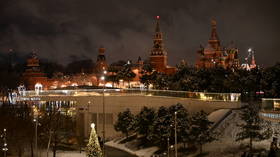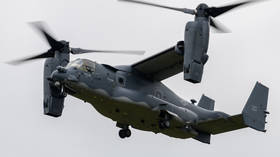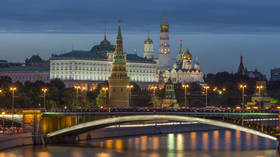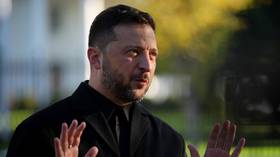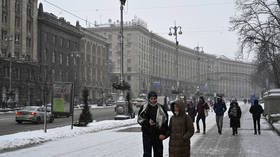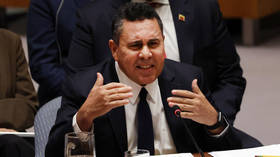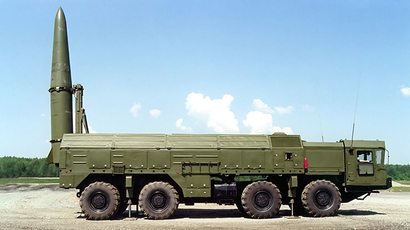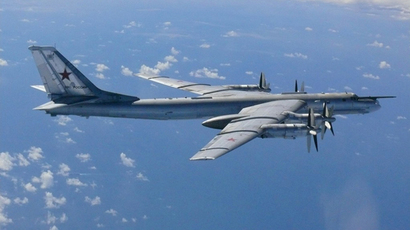'Bombs away' but not too fast: 9 nuke states slow in curbing 16,300 warheads

Nuclear-armed countries are upping the ante by modernizing their delivery systems and warheads, Swedish researchers have found. The report dampens hopes of modest stockpile reductions.
Amid a steady decline in the number of nuclear warheads in the
world over the past five years, the nine nuclear-armed states
still possess a total of 16,300 such weapons of mass destruction
in early 2014 - down by around 5.6 percent from the previous
year, the Stockholm International Peace Research Institute
(SIPRI) revealed in its annual report on Monday.
"Once again this year, the nuclear weapon-possessing states
took little action to indicate a genuine willingness to work
toward complete dismantlement of their nuclear arsenals,"
wrote SIPRI researchers Shannon Kile and Phillip Patton Schell.
A large part of the reductions came from Cold War-era foes United
States and Russia, which together possess around 93 percent of
the world's nuclear weapons.
However, Washington’s insistence on building a missile defense
shield in Eastern Europe – just miles from the Russian border,
and without Russia’s involvement – threatens to terminate the
2011 New Start treaty, which limits the number of deployed
strategic nuclear warheads to 1,550.
Russia’s military brass says a missile defense system in
Eastern Europe would threaten the strategic balance of the
region, leading to another arms race.
Moscow has emphasized its unwillingness to make any additional
cuts to its nuclear arsenal until the US and NATO find common
ground with Russia over the controversial system. Until then,
Russia seems intent to upgrade its nuclear weapons architecture.
"Russia is in the middle of a broad upgrade of its strategic
nuclear forces that over the next decade will retire all
Soviet-era inter-continental ballistic missiles," SIPRI
said.
The United States and Russia "have extensive modernization
programs under way for their remaining nuclear delivery systems,
warheads, and production facilities", the report continued.
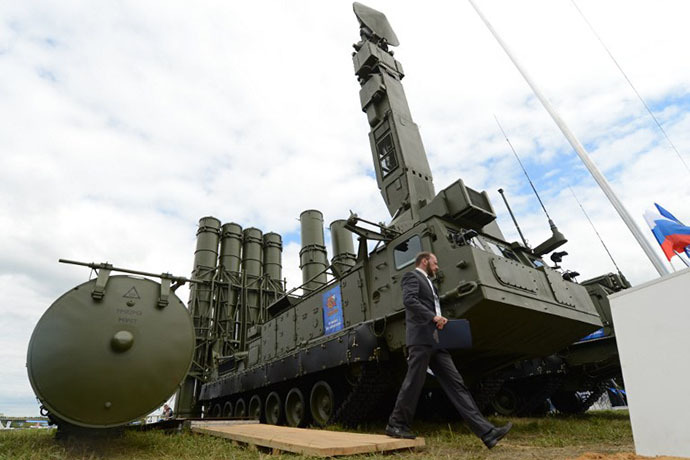
Meanwhile, the nuclear stockpiles of the other states are
considerably smaller, but they are "either developing or
deploying new weapons or have announced their intention to do
so."
Aside from Russia and the US, the report identified nine nuclear
weapon states: Britain, France, China, Pakistan, India, Israel
and North Korea.
Russia, France, Britain and China and the United States are the
world's five officially recognized nuclear weapons states, while
the remaining four have not signed up to the Non-Proliferation
Treaty, designed to prevent the spread of nuclear weapons.
Israel, while never formally admitting to owning nuclear weapons,
is believed to be the only nuclear-armed nation in the Middle
East. At the same time, Israel frequently accuses Iran of
pursuing nuclear weapons under the guise of a nuclear energy
program.
Tehran has vehemently denied the allegations.
Of the nine states covered in its report, SIPRI estimated that
North Korea has the fewest weapons, estimated to be as many as
eight.
"There is an emerging consensus in the expert community that
North Korea has produced a small number of nuclear weapons, as
distinct from rudimentary nuclear explosive devices," it
said.
To date, the United States is the only country to have the
ignominy of resorting to the use of nuclear weapons when it
dropped two atomic bombs on the Japanese cities of Hiroshima
(August 6, 1945) and Nagasaki (August 9, 1945) in the final days
of World War II.
Within the first four months of the bombings, the radiation had
already killed 90,000–166,000 people in Hiroshima and
60,000–80,000 in Nagasaki; nearly half of the deaths in each city
occurred on the first day of the bombings.


